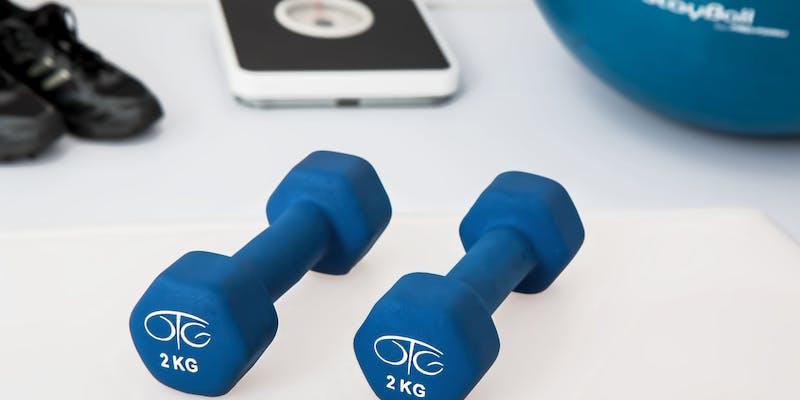Weather and Arthritis Pain: Unveiling the Truth Behind the Myth
Feb 23, 2024 By Nancy Miller
Living with arthritis may make even the simplest things challenging. Many people constantly battle pain and suffering. Many individuals are perpetually at odds with pain and distress. Has anyone ever observed that as the weather changes, the severity of their arthritis symptoms increases? One might envision themselves engaged in their ordinary activities when they notice the formation of storm clouds. The impending joint discomfort that frequently accompanies weather changes should be your foremost concern, not whether or not you are carrying an umbrella. Experiencing flare-ups in response to atmospheric changes is akin to your arthritis having its weather forecast.
Recent Research On Weather and Arthritis
Does weather alter arthritis symptoms? However, we have provided three real-life examples to support the idea.
- Stude 1: In a two-year Dutch study of 222 hip osteoarthritis patients, higher barometric pressure and humidity were linked to slight discomfort and stiffness. Although the effect was small, research implies climatic conditions may cause arthritic discomfort.
- Study 2: Over 800 people with hip, knee, or hand osteoarthritis were studied in six European nations. The results changed little. Most temperature changes didn't affect symptoms, but higher humidity worsened pain and stiffness, especially in cooler weather. Some weather conditions may worsen arthritic symptoms more than others.
- Study 3: In the third study, researchers recruited approximately 2600 chronic pain patients, most of whom had arthritis, as "citizen scientists." For almost a year, they reported symptoms on their phones. Researchers found small connections between pain and humidity, air pressure, and wind speed by comparing patient reports with local weather data.
Role of Vitamin D
A healthy immune system, strong bones, teeth, and muscles require enough vitamin D. The skin produces vitamin D from sunlight, making it the main source. Different people need different amounts of sun to make vitamin D. Skin type, season, and location all matter. Those with fair skin in the UK may only need 10 minutes of sunshine daily, while those with darker skin may need 25.
Rheumatologists recommend vitamin D supplements for all UK residents. See your primary arthritis self-care doctor or rheumatologist if you have vitamin D concerns or joint pain. These experts can check vitamin D levels in winter when they are lower. People living with Psoriasis often benefit from sun exposure. Researchers haven't found that sun exposure helps psoriatic arthritis. Multiple professors say sunlight helps skin psoriasis but not joint symptoms. Due to their mild skin issues, PUVA (ultraviolet light augmented with tablets) does not work for many psoriatic arthritis patients.
Different Weathers and Their Effects

Summer Weather
Those who have arthritis therapy frequently experience a reduction in discomfort during the warm summer months. Although summertime high humidity, a frequent occurrence, may occasionally exacerbate arthritis discomfort, it is generally not as distressing as the humidity that characterizes the winter season. During the colder months, moisture in the air has been observed to exacerbate voltaren arthritis pain substantially.
Summer provides a much-appreciated respite for those who have arthritis. In the presence of humidity, discomfort is frequently alleviated on warmer, sunnier days. Dry conditions are typically more comfortable, induce less pain, and are ideal for individuals with arthritis.
Rainy Days and Winter
The weight of the atmosphere is barometric pressure in its simplest form. It rises in response to favorable meteorological conditions, such as warmth and sunshine, and falls in response to unfavorable conditions, such as cyclones and gale-force winds. Temperatures and barometric pressures both decrease during precipitation and snowfall. Increased sensitivity to pain during movement and stiffness may result from the viscosity of joint fluids brought about by this decrease in pressure. During harsher and wetter seasons, voltaren arthritis pain may feel more intense.
Physical Activity
Low-impact arthritis self-care exercises, including walking, biking, water aerobics, and dancing, help arthritis sufferers. Weather often affects exercising. Bike riding and strolling are more enticing activities on pleasant days. On the contrary, inclement weather, such as cold or rain, may induce a reduction in physical activity levels due to an increased inclination to remain indoors.
Particularly for those with milder forms of arthritis, skipping arthritis self-care exercise daily in inclement weather may not have a substantial effect. Decreased physical activity caused by prolonged periods of inclement weather, on the other hand, can worsen pain.
Weather profoundly impacts mood. People feel worse when it rains but better when it shines. A depression called seasonal affective disorder (SAD) begins in late fall or early winter and ends in spring or summer. Only about 5% of Americans are affected annually. Due to seasonal affective disorder (SAD) and weather-related mood swings, arthritic pain might rise in bad weather and fall in good weather.
Managing Tips For Arthritis

Keeping Joints Warm
A drop in temperature can strain and hurt your joints. Heat is a fantastic way to fight this. Heating pads or compresses relieve muscle and joint discomfort. Keep your whole body warm, not just the aching spot. On cold days, wear layers; while driving, use an electric blanket; and while sleeping, layer. Keep warm—it's not a luxury—to lessen joint pain.
Managing Swelling Effectively
Joint swelling can be annoying, but there are practical ways to control it. Compression knee sleeves or spandex gloves can help. The affected areas receive gentle pressure to reduce pain and swelling. This procedure is simple and can be added to your routine. As swelling and joint pain decrease, daily tasks will be easier.
Exercise
Physical activity helps manage joint pain, especially in changing weather. Working out before going outside prepares your joints for the day. Before starting an exercise program, consult a doctor or physical therapist about your needs. These professionals can tailor a program to optimize your benefit. Regular exercise reduces joint pain and other health issues.
Mood Improvement
Chronic arthritis therapy can induce emotional suffering. It's crucial to schedule time for fun and stress relief. This includes psychotherapy and support group participation. Meditation and exercise improve cerebral clarity, physical activity, and emotional stability. An optimistic perspective helps arthritic pain management.
Adequate Sleep
Sleeping well is crucial for people living with arthritis. Sleep deprivation can aggravate mood and joint pain. Not getting enough sleep can worsen weather-related pain. If you want to manage voltaren arthritis pain, prioritize sleep.
Adaptation to Environmental Changes
It's fascinating how our bodies adapt to weather. Your body adjusts to barometric pressure. This happens when you move to a rainier climate. This modification moves joint fluid into the bloodstream, relieving pain. Your body's adaptability shows resilience, even if it takes time. Fortunately, the weather changes and their discomfort is temporary.







